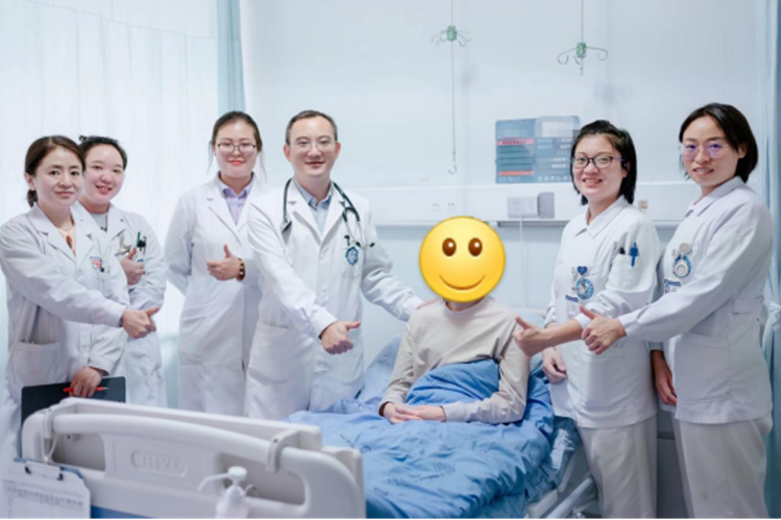Recently, West China Hospital (WCH) launched the first Investigator-initiated Clinical Trial (IIT) about recombinant adeno-associated virus (rAAV) gene therapy for Fabry disease in China - "Clinical Study to Evaluate the Safety and Efficacy of ZS805 Adeno-associated Virus Vector Expression of Human Alpha-Galactosidase A in the Treatment of Fabry Disease Patients" and completed the first case of patient treatment. The project was led by Professor Chen Yucheng, Director of Internal Medicine Department and Deputy Director of the Rare Disease Diagnosis and Treatment Research Center. The research was jointly conducted by six tertiary hospitals in China, of which the research drug ZS805 is led by Professor Dong Biao and Professor Hoi Yee Chow from the State Key Laboratory of Biotherapy.
The first patient, Yan, is 24 years old. The patient has shown burning sensation and absence of sweating in the extremities, since the age of 9 years old. Two years ago, the skin keratomas and elevated urinary proteins appeared, and the diagnosis of Fabry disease was confirmed by genetic testing. After diagnosis, Yan did not receive the treatment due to the high cost of enzyme replacement therapy. It was not until enzyme replacement therapy was covered by Chinese medical insurance that Yan began to receive fortnightly intravenous infusions. However, the frequent hospital admissions have caused great inconvenience to his life.
After learning that WCH’s clinical research on gene therapy, Yan took the initiative to contact the research team and applied to be the first gene therapy volunteer. After rigorous screening as well as pre-treatment preparation and examination. on 26 October 2023, Yan received gene therapy and expressed no discomfort during the subsequent observation. The subsequent test showed that the activity of a-Gal A in the patient’s body has recovered to the normal level. Currently, the patient is still under the close monitoring by researchers.

Fabry disease is a rare X-linked hereditary lysosomal accumulation disease, which is more common in males than in females. According to foreign studies, the incidence rate among male newborns is 1/110000~1/40000. The cause of the disease is the deficiency of a-Gal A causing by a mutation in the a-galactosidase A (GLA) gene, which results in metabolism substrate sphingosine trihexylglycoside and related sphingolipids accumulated in tissues and causes organ dysfunction. The major organs involved are heart, kidneys, lungs, eyes, brain, and skin, resulting in ventricular hypertrophy, renal failure, stroke, peripheral nerve pain, and others. Cardiomyopathy is often the main cause of death in patients. The traditional treatment for Fabry disease is enzyme replacement therapy, which requires patients to receive a fortnightly infusion of agalsidase and lifelong treatment, which has a significant impact on their quality of daily life, work, and study. In addition, the treatment is both time-consuming and expensive.
ZS805 was developed by Prof. Dong Biao and Prof. Hoi Yee Chow of the State Key Laboratory of Biotherapy, and produced by Sichuan Zhishan Weixin Biotechnology Co., Ltd. and belongs to the therapeutic biologics class 1 innovative biologics. The gene expression cassette framework of ZS805 is equipped with the company's self-developed liver-specific promoter and the genetically engineered and optimized GLA gene, to ensure specific expression and efficient secretion of a-Gal A in hepatocyte. The gene expression cassette framework of ZS805 is equipped with a liver-specific promoter developed by the company and a genetically engineered and optimized GLA gene, which ensures that the a-Gal A is specifically expressed and efficiently secreted in hepatocyte and improves the safety and efficacy of the drug. The introduction of this gene therapy is expected to realize the "one-shot treatment, long-term and even life-long effectiveness" for Fabry disease, which will bring hope for a cure to the vast number of Fabry disease patients.